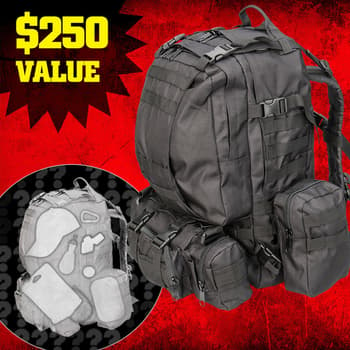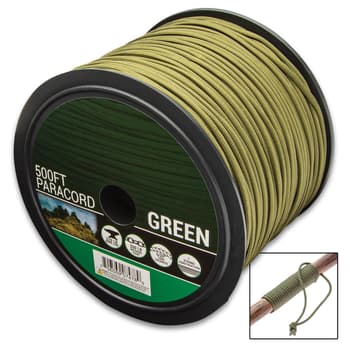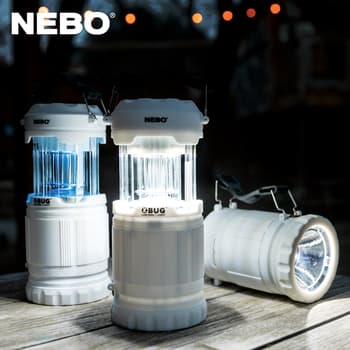What’s In A Bug-Out Bag?

By Adelia Ladson
What’s A Bug-Out Bag?
A bug-out bag is a grab-and-go backpack, duffle or any other easy-to-carry bag that contains emergency survival gear. It’s designed to get you to where your “bug-out location” is, which is the place that you have chosen ahead of time to evacuate in case of disaster. A disaster could be anything from a man-made catastrophe like nuclear war or a natural catastrophe like a hurricane. Your safe, bug-out location should be a significant distance away from your home and your bug-out bag’s supplies should include all that you need for the time it will take to get there. If evacuating ahead of the hurricane, your bug-out location could be a hotel or relative’s home in another city or if evacuating in the wake of war and the fall of civilization, your bug-out location could be a remote mountain cabin. Either way, the supplies in your bug-out bag are not supposed to be what you expect to live off of forever.Why Do I Need A Bug-Out Bag?
As mentioned above, a man-made or natural disaster could occur at any time. There’s no question that you greatly increase your chances of survival if you’re prepared. A bug-out bag prepped ahead of time keeps you from running around like a chicken with its head cut off to throw essentials into your bag. It also keeps you from forgetting necessary items like essential medications, important documents, a first aid kit or a flashlight. Keeping a bug-out bag in your home gives you the peace of mind to know that you have done what you needed to do to prepare for evacuation if that becomes necessary.Choosing A Bag
Of course, the place to start is the bag itself. It really doesn’t matter what kind of bag you use. It can be a backpack, a duffle bag or even a carry-on bag. The main thing is that it needs to be easy for you to grab at a moment’s notice and comfortable to carry. It also needs to have sufficient space to carry the survival supplies and essential items that you need in your possession when you leave your home. Personally, I prefer a backpack for its ease of carry. Here are a couple of different bags that make excellent bug-out bags.M48 OPS All-Purpose Backpack
Just a great all-around backpack, the M48 OPS All-Purpose Backpack is a good choice. It’s made of a tough nylon with sturdy but comfortable adjustable arm and waist straps, which will make a huge difference if you have to literally “head for the hills”. What I like is that it has a place to secure a bedroll. It has two deep outside pockets and lots of MOLLE webbing, plus, compressions straps. At approximately 21 1/2”x 15”x 10 1/2” you can pack everything but the bathroom sink in this backpack!Outback Traveler Duffle Bag
The Outback Traveler Duffle Bag is another great choice of grab-and-go bag. It has a tough canvas construction with leather handles and a removable nylon webbing shoulder strap. The main compartment is spacious and has three, open interior pockets and two zippered pockets. There are also two zippered slip-in pockets on the outside of the bag. This duffle bag is approximately 22”x 13”x 10”, also giving you plenty of space for everything.What Goes In The Bag?
Okay, now that you have your bag, you need to pack it with the essentials that you need. And ONLY the essentials. This isn’t a weekend getaway or a camping trip. There are survival tools and items you absolutely need to have in your bug-out bag.The Main Compartment
The first thing that you need to put in the bottom of the main compartment of your bag is a rain poncho because it makes a good bottom liner for your bag since it’s waterproof. Having a rain poncho with grommets, so that it can also be rigged up as a shelter in worst case scenarios is a must. Then, go ahead and put in pouches from the ReadyWise 72-Hour Emergency Food Supply Kit. The kit contains breakfast, lunch, dinner entrees and drinks, which should be sufficient to get you to your bug-out location. Then, slide in, next to the food pouches, the Membrane Solutions Three-Liter Water Filter Bag and Straw, which comes neatly packed in its own storage bag. Easy-to-use and with a three-step filtration, this device will assure you of safe and clean drinking water whatever the source. Also drop in a hank of seven-strand paracord and a high-quality flashlight like the Nebo Redline Rechargeable Flashlight. Now, you need to pack your smaller supplies in gallon-sized zip-top plastic bags to keep them organized or other supplies that need extra moisture protection.- Gallon Plastic Bags: In one bag, place any documents that you deem important to take with you like copies of your birth certificate, property deeds and vehicle title or the original documents if they are actually located in your home. Originals of any documents that you have in your home would need to be packed, obviously, at the last minute. Other things to consider are your passport, your will and any financial assets documents. In another bag, place your essential medications like blood pressure drugs, cholesterol drugs, blood sugar control drugs or antidepressants. It’s good to have a month’s supply of these important medications, which you would need to get ahead of time to pack and then rotate out every so often, based on the expiration date. Place two rolls of toilet paper, that has been flattened as much as possible, in the next bag. Believe me, this is a necessity! Use a bag to store some on-the-go dining tools like the Trailblazer Utensil Set, a package of antiseptic hand wipes, a couple of packs of compressed towels and an emergency survival blanket, which is constructed of a reflective polyester material that has multiple purposes. If any part of your bug-out journey is going to have you out in the sun or in the wilderness, include in one of the gallon bags sunblock and insect repellant. Then, extra zip-top gallon bags and some plastic grocery bags can go in a bag. Place all of these bagged supplies into the main compartment.
- First Aid Kit: Having a quality first aid kit when you’re bugging-out is an absolute necessity. The Elite Hikers First Aid Kit has straps that can be attached to any MOLLE webbing on your backpack, if you want, or it goes into your bug-out bag’s main compartment. It has a variety of basic first aid supplies and there is room in the kit to include a tube of antiseptic cream, lip balm, rubber bands and a small bottle of hand sanitizer. Also, put inside the kit a small plastic bag of some type of antibiotic.
- Bedroll: Some backpacks have straps at the bottom of them so that a bedroll can be secured to the pack, otherwise, it needs to go in the main compartment. The Trailblazer Emergency Outdoor Double-Sided Mattress will be your ground cover, as it has a thermal reflective construction on one side and padded EVA foam on the other side. A wool blanket will be your cover because there’s nothing like wool when it comes to keeping you warm and insulating you against the elements, even if it’s damp. Add to that a full-size cotton sheet for a cover if it’s too warm for the wool blanket. Roll the two blankets and sheet up together to form your bedroll and tie with a piece of paracord at each end. The ideal, of course, would be that you don’t have to “sleep rough” before you get to your safe location, but you never know what’s going to happen during a disaster situation.
- Clothes: Really, the last things to consider packing are a change of clothes, underwear and a couple of pairs of socks, since it’s very important to keep your feet dry, especially, if you’re going to be walking a fair distance to your bug-out location. This location should be a place that you can get to within a couple of days, preferably part of the trip by vehicle. So, you shouldn’t have to take a week’s worth of clothing with you.
- Essential Electronics: Packed on top of everything else in the main compartment should be an emergency radio and a solar charger power bank. I like the Kaito Voyager Solar Radio since it can be powered by a solar panel, a dynamo hand-crank, a USB cable an AC adapter or AA batteries. This assures you that you can stay informed of what’s going on in your area with the weather and the news at all times. This is very important so that you can make decisions about your travel route. These are both items that you want to have easy access to, since you need to know what’s going on and you want to expose your solar charger to the sun whenever you can.



